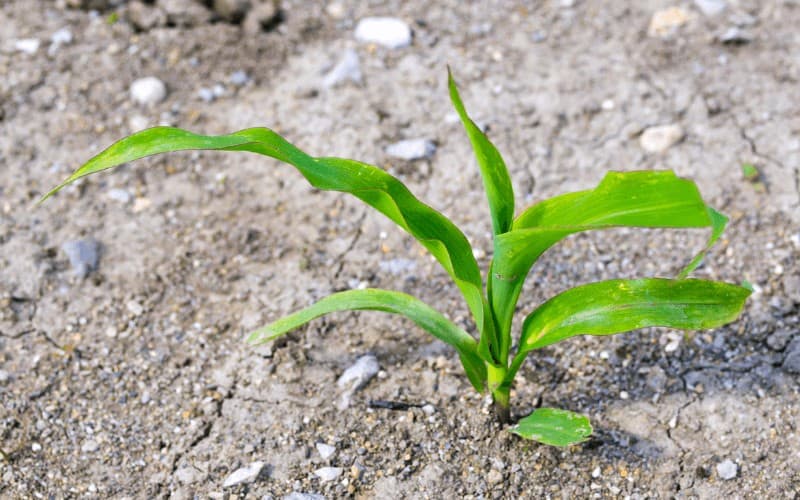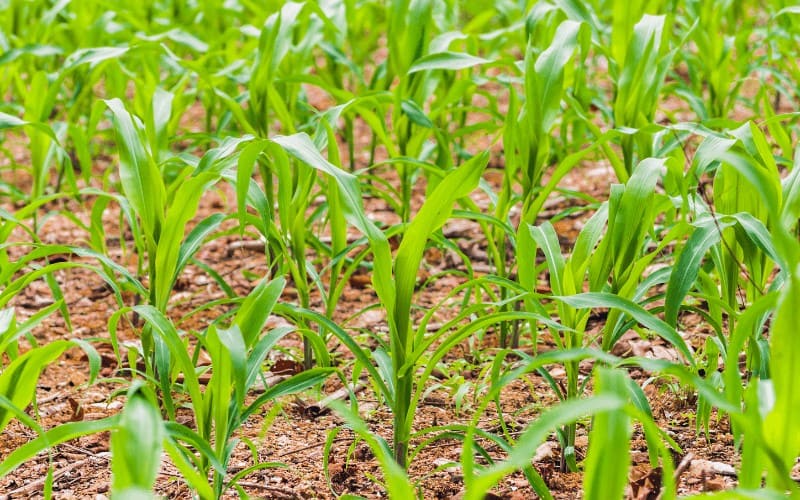The joy of seeing your corn plant blooming is always satisfying. Even though it is a strong and versatile plant that can grow in any condition. Because of its tolerant nature to neglect, the corn plant is often the go-to when considering house plants.
However, disappointment can set in when you begin to notice your plant’s leaves turning brown, yellow, etc. Having a once-blooming plant suddenly fade away is not something a gardener would want to constantly experience.
Fortunately, the step by step of saving a dying corn plant is not nearly as difficult as you may think. The steps are really easy, I can assure you.
So, it is because of you this article on how to save a dying corn plant seeks to provide you with a solution.
Table of Contents
How Do You Bring a Dying Corn Plant Back to Life?
You are tired of losing your beautiful corn plants every day. The awesome sight and feel they used to provide you with are no longer there. They are gradually reducing in number and you must find a solution.
Although a majority of gardeners grow corn plants outdoors, Still, You can grow your corn plants indoors.
You don’t have to be a horticulturist, neither must you hire the services of a professional gardener for you to learn how to save a dying corn plant. You can simply do it yourself (DIY).
The corn plant has several names, but all of them are of the family of Dracaena. They all have the same growing and care procedures and this article is written to suit all variants of corn plants.
That said, here's how to save a dying corn plant:
How To Save a Dying Corn Plant

1. Cut off the Dead Parts
It is easily noticeable when your corn plant begins to die. One clear sign is the corn plant stalk and leaves turning brown.
At the sight of these changes, you often see gardeners panicky and asking questions like why are the leaves on my corn plant turning brown? Will my corn plant come back?
Although it is human nature to worry, however, worrying never provides a solution. The moment you identify these dead parts, take action by trimming them off using gardening scissors.
Begin by cutting off the dying leaves. When you have removed all the unwanted leaves, proceed to the dead stems and do the same.
Carefully carry out this process one-third at a time gradually until you see signs of green budding from the trimmed regions.
2. Leave Stumps Remain In Soil
Do not remove stumps of your dead corn plants completely from the soil or trim dying ones to the roots system. Ensure to research properly on how to cut back a corn stalk plant.
For future purposes, to pass the first step on how to propagate the corn plant you must leave about 4cm-5cm of the stump above the soil. This could facilitate the sprouting or repotting corn plant.
You must find out first if the plant is dead before getting rid of it. Why you may ask?
It is not in all cases that dried leaves mean that your dying plant is beyond saving. Proper observation of both the stems and the roots will help determine what your plants lack.
Research performed by UK's leading gardening charity - the Royal Horticultural Society showed that farmers who talk to their plants create more bonds and experience growth. You should try it today!
3. Application of Water
As the saying goes - water is life. The constituents of water make it invaluable both for human, animal, and plant uses. In fact, every living thing needs water to survive. However, moderation is key.
Regular application of water to your dying corn plant can help you prevent it from dying. However, before growing a corn plant, there are certain questions on watering: you must have an answer or expert opinion.
Questions such as - How much water should I give my corn plant? Should you water corn every day? Getting expert answers to these questions from the beginning will set you on the right path.
One major consequence of overwatering is corn plant stem rot. Trust that you don’t want to develop a problem while seeking a solution for another.
However, in cases when you overwater your plant. There are measures to revive an over-watered plant.
Obvious indications that your plant direly needs water include leaves turning brown which are often noticed around the edges or when they are curled up.
4. Diagnose the cause
A lot of factors are responsible for why most corn plants could die. Therefore, you need to first find out why this often happens to your plants.
Ask yourself if the necessary conditions required for optimum growth are fully in place.
Some of these conditions are:
- Indirect Sunlight
- Temperature between 60 and 75 degrees Fahrenheit
- Nutrient
- Manure (soluble)
- Potting Soil: ensure it is a well-draining one
- Humidity: 40% to 50%
- Water: the water you use should be dechlorinated. Therefore, leave plant water for a minimum of 24 hours before you feed them.
Note: the required temperature for an indoor corn plant is between 600F (150C)–750F (240C), and must not go below 500F if taken outdoor.
5. Get Rid of Diseases
The common enemy of the plant is a disease!
Most plants are susceptible to diseases and good practices do not exempt your corn plants from being attacked, which is why preparation is paramount.
Common Corn Plant Problems and How to Treat Them

Experts associate several problems with the corn plant. They include, but are not limited to:
1. Brown scorch marks leaves
If you often notice brown spots on your corn plant and most times accompanied by a yellow outer ring within the brown spot, it is a symptom of sunburn.
The best thing to do once you notice this is to move the plant away from the surface, exposing its leaves to direct sunlight.
Another way is to filter the sunlight (reduce its intensity) by using an ultraviolent window film or a curtain.
Perhaps you’re not sure if your corn plant is getting excess direct sunlight. How do you find this out? It is to observe the growth behavior of the leaves.
If you notice they grow inwards i.e. Curls instead of extending outwards, quickly take action so that you can prevent them from leaf burn.
2. Low Humidity
The corn plant is quite sensitive to humidity. During the winter months, you would notice that the indoor humidity seems to be drier than in other months of the year.
This means that you will need to provide more water for it till the end of winter.
Another approach that you can adopt is to move your corn plant to a more suitable place. You can also wet the leaves more frequently instead of watering the plant.
Read Also:
- How To Save a Dying Blueberry Plant
- Plants You Can Grow From Cutting In Water
- How To Revive a Dying Bamboo Plant
- How To Save a Dying Palm Tree
Conclusion
I believe after reading this article, you now realize that saving a dying corn plant is not as tasking as you might have thought.
Following these step-by-step procedures on how to save a dying corn plant, you see you don't have to burn a hole in your pocket to save your plant, rather it saves you from spending your hard-earned money on replacing dying corn when you don’t have to.
Let’s remind you of some notable actions to take to save your dying corn plant as highlighted above
- Cutting off dead parts
- Leaving stumps remain in the soil
- Applying water when needed
- Diagnosing the root cause, etc.
So, next time you see your plant dying, do well to follow these procedures.




